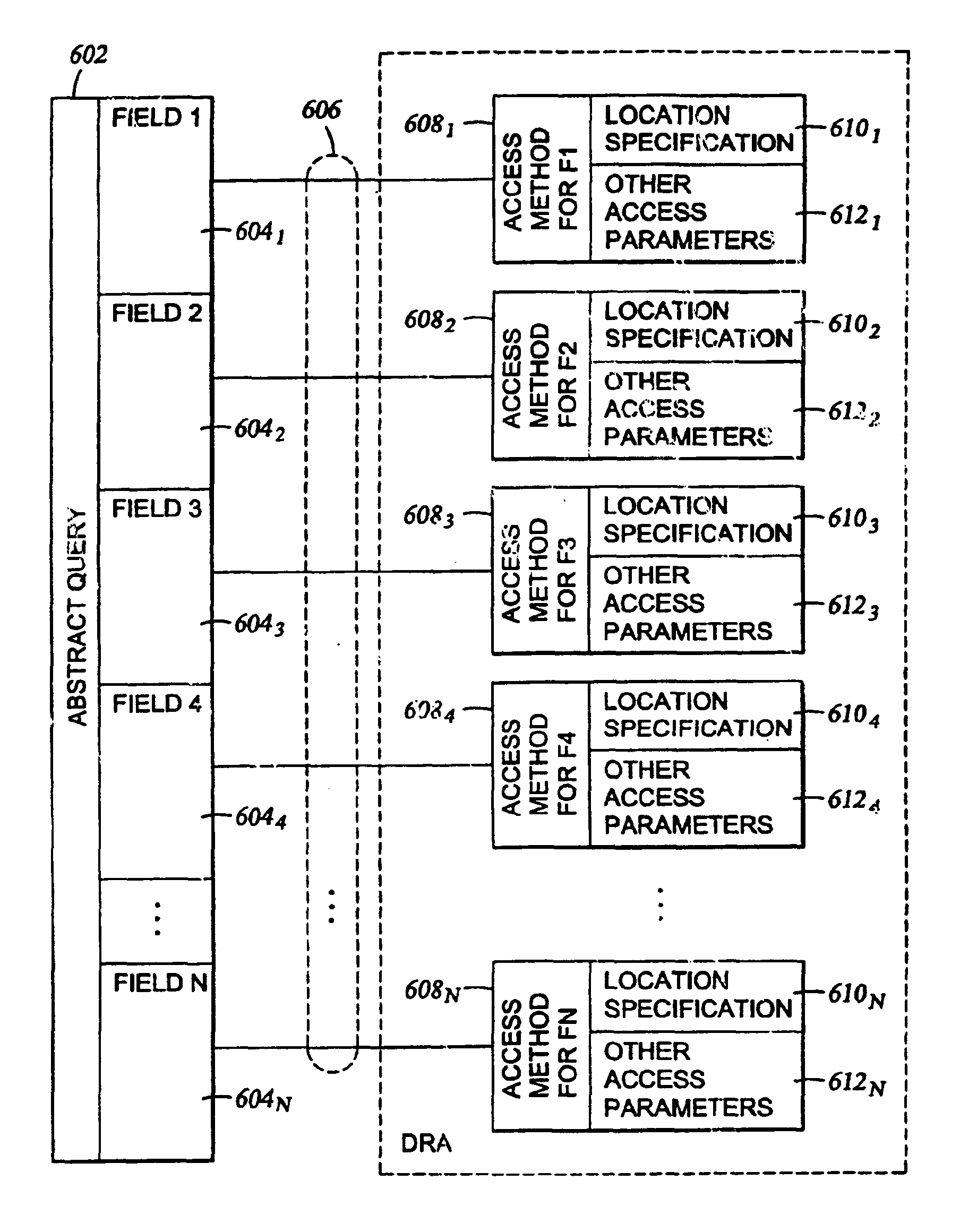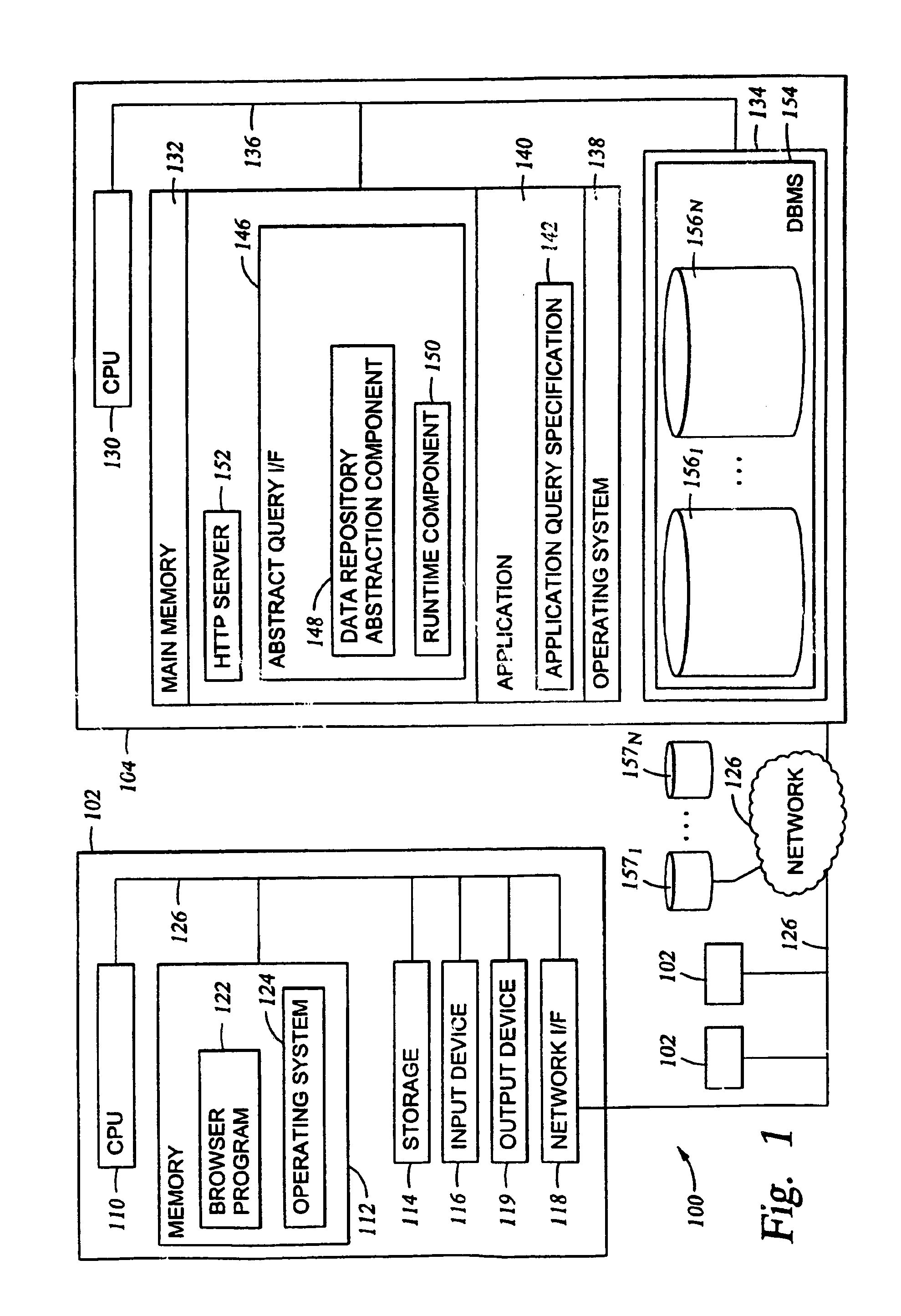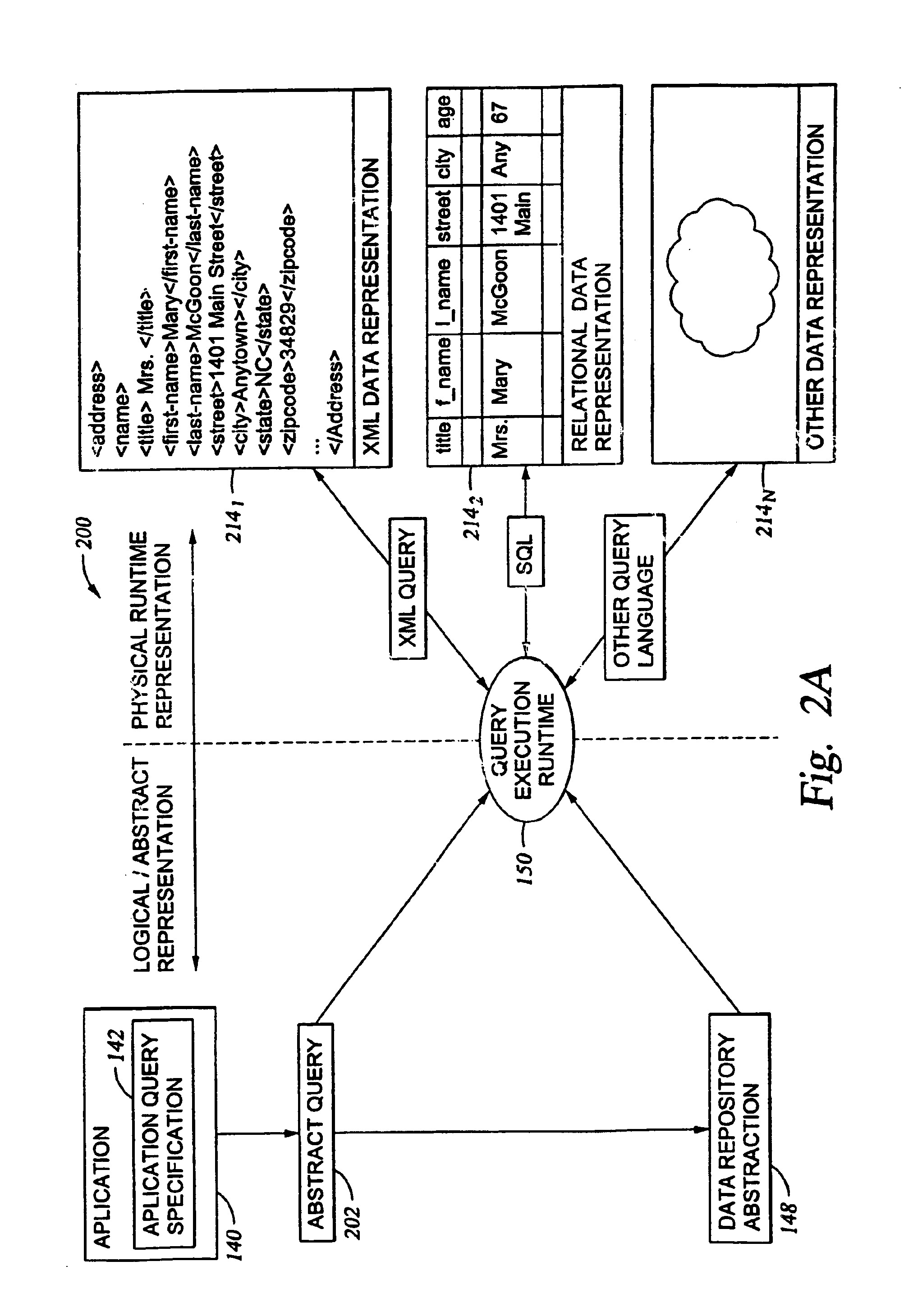Remote data access and integration of distributed data sources through data schema and query abstraction
a distributed data source and data schema technology, applied in the field of data access, can solve problems such as difficulty in supporting an application, inability to migrate an application to alternative underlying data representations, and difficulty in integrating distributed data sources
- Summary
- Abstract
- Description
- Claims
- Application Information
AI Technical Summary
Benefits of technology
Problems solved by technology
Method used
Image
Examples
Embodiment Construction
Introduction
[0028]The present invention generally is directed to a system, method and article of manufacture for accessing data independent of the particular manner in which the data is physically represented. The data may comprise a plurality of different data sources. In one embodiment, a data repository abstraction layer provides a logical view of one or more underlying data repositories that is independent of the particular manner of data representation. Where multiple data sources are provided, an instance of the data repository abstraction layer is configured with a location specification identifying the location of the data to be accessed. A query abstraction layer is also provided and is based on the data repository abstraction layer. A runtime component performs translation of an abstract query (constructed according to the query abstraction layer) into a form that can be used against a particular physical data representation.
[0029]One embodiment of the invention is impleme...
PUM
 Login to View More
Login to View More Abstract
Description
Claims
Application Information
 Login to View More
Login to View More - R&D
- Intellectual Property
- Life Sciences
- Materials
- Tech Scout
- Unparalleled Data Quality
- Higher Quality Content
- 60% Fewer Hallucinations
Browse by: Latest US Patents, China's latest patents, Technical Efficacy Thesaurus, Application Domain, Technology Topic, Popular Technical Reports.
© 2025 PatSnap. All rights reserved.Legal|Privacy policy|Modern Slavery Act Transparency Statement|Sitemap|About US| Contact US: help@patsnap.com



